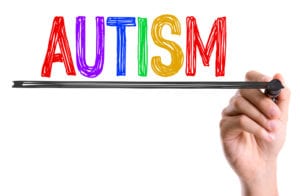Written by Joyce Smith, BS. Cannabis treatment was shown to be safe and to improve ASD symptoms and quality of life in the participating autistic patients.
 Diagnosed autism spectrum disorder (ASD) in children has increased by 300% worldwide 1,2. In 2007, the Israeli Minister of Health began allowing the use of Cannabis for pain mitigation. By 2014, its use was expanded to treat children with epilepsy. The dramatic improvements that followed in anxiety, aggression, panic, tantrums, and self- injurious behavior in epileptic children encouraged parents to use medical cannabis to treat their severely autistic children. However, the absence of a significant safety profile and knowledge as to what symptoms are most likely to improve with cannabis use, motivated Schleider et al 3 to design a study that would characterize the patient population receiving medical cannabis treatment and to evaluate the safety and efficacy of cannabis therapy.
Diagnosed autism spectrum disorder (ASD) in children has increased by 300% worldwide 1,2. In 2007, the Israeli Minister of Health began allowing the use of Cannabis for pain mitigation. By 2014, its use was expanded to treat children with epilepsy. The dramatic improvements that followed in anxiety, aggression, panic, tantrums, and self- injurious behavior in epileptic children encouraged parents to use medical cannabis to treat their severely autistic children. However, the absence of a significant safety profile and knowledge as to what symptoms are most likely to improve with cannabis use, motivated Schleider et al 3 to design a study that would characterize the patient population receiving medical cannabis treatment and to evaluate the safety and efficacy of cannabis therapy.
At baseline, parents of the 188 patients reported an average of 6.3 ± 3.2 symptoms with the most common being restlessness (90.4%), rage attacks (79.8%) and agitation 78.7%. Most of the patients were males (81.9%). Twenty-seven patients (14.4%) suffered from epilepsy and 7 patients (3.7%) from Attention Deficit Hyperactivity Disorder (ADHD). The treatment in the majority of patients consisted of cannabis oil containing 30 percent cannabidiol oil (CBD) and 1.5 percent tetrahydrocannabinol (THC) (an average 79.5 ± 61.5 mg CBD and 4.0 ± 3.0 mg THC, three times a day). Symptoms, patient global assessment and side effects at six months were primary outcomes of interest and were assessed by structured questionnaires.
Quality of life, mood and ability to perform activities of daily living were assessed prior to treatment and at six months. Thirty-one % of patients reported “good quality of life” prior to treatment initiation. At six months, good quality of life more than doubled to 66.8 %. Positive mood was reported as 42 % before treatment and 63.5 % after six months. The ability to dress and shower independently improved significantly from cannabis treatment. Only a quarter (26.4 %) reported no difficulty prior to the treatment while 42.9 % improved their ability to dress and shower independently at six months. Sleep and concentration were also significantly improved by cannabis oil: 3.3 % and zero percent respectively at the outset vs. 24.7 % and 14 % during active treatment. Overall, after six months of treatment, 30 % of patients reported a significant improvement in symptoms, 53.7% reported moderate improvement, and only 15 % had slight or no change. Reported side effects at one month were: sleepiness (1.6%), bad taste and smell of the oil (1.6%), restlessness (0.8%), reflux (0.8%) and lack of appetite (0.8%).
This study had no control group therefore no causality could be established. The authors did not validate a previous diagnosis of ASD by an ASD certified medical neurologist or psychiatrist. Parental reporting was subjective. There was a potential for bias when only 60% of participants responded to questionnaires concerning treatment efficacy and safety; however, 80% were treatment compliant.
Cannabis treatment was shown to be safe and to improve ASD symptoms and quality of life in participating patients; however, double-blind placebo-controlled trials are mandatory to further clarify the effect of cannabis on patients with ASD.
Source: Schleider, Lihi Bar-Lev, Raphael Mechoulam, Naama Saban, Gal Meiri, and Victor Novack. “Real life Experience of Medical Cannabis Treatment in Autism: Analysis of Safety and Efficacy.” Scientific reports 9, no. 1 (2019): 200.
© The Author(s) 2019 Open Access This article is licensed under a Creative Commons Attribution 4.0 International License, http://creativecommons.org/licenses/by/4.0/.
Click here to read the full text study.
Posted April 15, 2019.
Joyce Smith, BS, is a degreed laboratory technologist. She received her bachelor of arts with a major in Chemistry and a minor in Biology from the University of Saskatchewan and her internship through the University of Saskatchewan College of Medicine and the Royal University Hospital in Saskatoon, Saskatchewan. She currently resides in Bloomingdale, IL.
References:
- Croen LA, Grether JK, Hoogstrate J, Selvin S. The changing prevalence of autism in California. J Autism Dev Disord. 2002;32(3):207-215.
- Lundstrom S, Reichenberg A, Anckarsater H, Lichtenstein P, Gillberg C. Autism phenotype versus registered diagnosis in Swedish children: prevalence trends over 10 years in general population samples. Bmj. 2015;350:h1961.
- Bar-Lev Schleider L, Mechoulam R, Saban N, Meiri G, Novack V. Real life Experience of Medical Cannabis Treatment in Autism: Analysis of Safety and Efficacy. Sci Rep. 2019;9(1):200.
